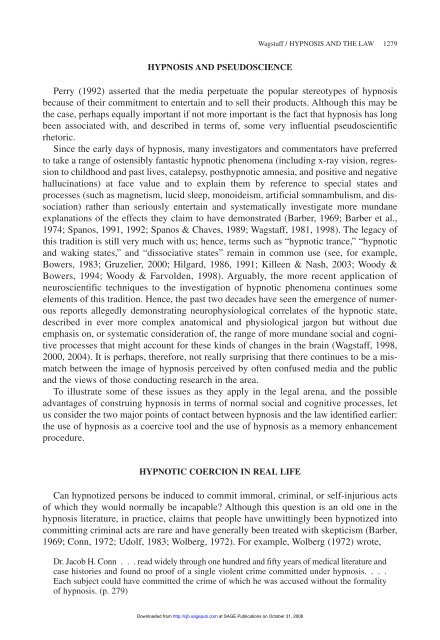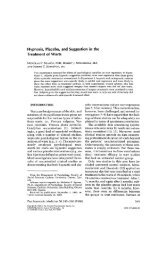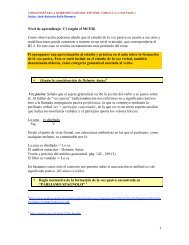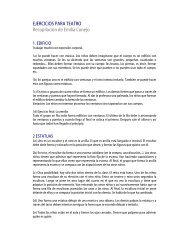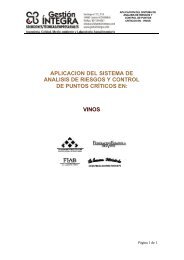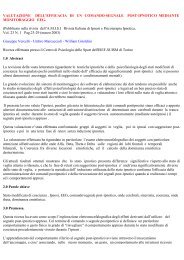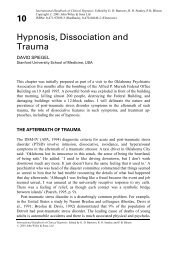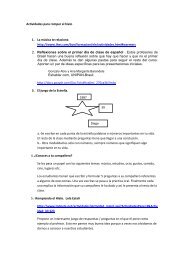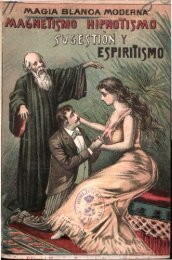Hypnosis and the Law: Examining the Stereotypes
Hypnosis and the Law: Examining the Stereotypes
Hypnosis and the Law: Examining the Stereotypes
You also want an ePaper? Increase the reach of your titles
YUMPU automatically turns print PDFs into web optimized ePapers that Google loves.
HYPNOSIS AND PSEUDOSCIENCE<br />
Perry (1992) asserted that <strong>the</strong> media perpetuate <strong>the</strong> popular stereotypes of hypnosis<br />
because of <strong>the</strong>ir commitment to entertain <strong>and</strong> to sell <strong>the</strong>ir products. Although this may be<br />
<strong>the</strong> case, perhaps equally important if not more important is <strong>the</strong> fact that hypnosis has long<br />
been associated with, <strong>and</strong> described in terms of, some very influential pseudoscientific<br />
rhetoric.<br />
Since <strong>the</strong> early days of hypnosis, many investigators <strong>and</strong> commentators have preferred<br />
to take a range of ostensibly fantastic hypnotic phenomena (including x-ray vision, regression<br />
to childhood <strong>and</strong> past lives, catalepsy, posthypnotic amnesia, <strong>and</strong> positive <strong>and</strong> negative<br />
hallucinations) at face value <strong>and</strong> to explain <strong>the</strong>m by reference to special states <strong>and</strong><br />
processes (such as magnetism, lucid sleep, monoideism, artificial somnambulism, <strong>and</strong> dissociation)<br />
ra<strong>the</strong>r than seriously entertain <strong>and</strong> systematically investigate more mundane<br />
explanations of <strong>the</strong> effects <strong>the</strong>y claim to have demonstrated (Barber, 1969; Barber et al.,<br />
1974; Spanos, 1991, 1992; Spanos & Chaves, 1989; Wagstaff, 1981, 1998). The legacy of<br />
this tradition is still very much with us; hence, terms such as “hypnotic trance,” “hypnotic<br />
<strong>and</strong> waking states,” <strong>and</strong> “dissociative states” remain in common use (see, for example,<br />
Bowers, 1983; Gruzelier, 2000; Hilgard, 1986, 1991; Killeen & Nash, 2003; Woody &<br />
Bowers, 1994; Woody & Farvolden, 1998). Arguably, <strong>the</strong> more recent application of<br />
neuroscientific techniques to <strong>the</strong> investigation of hypnotic phenomena continues some<br />
elements of this tradition. Hence, <strong>the</strong> past two decades have seen <strong>the</strong> emergence of numerous<br />
reports allegedly demonstrating neurophysiological correlates of <strong>the</strong> hypnotic state,<br />
described in ever more complex anatomical <strong>and</strong> physiological jargon but without due<br />
emphasis on, or systematic consideration of, <strong>the</strong> range of more mundane social <strong>and</strong> cognitive<br />
processes that might account for <strong>the</strong>se kinds of changes in <strong>the</strong> brain (Wagstaff, 1998,<br />
2000, 2004). It is perhaps, <strong>the</strong>refore, not really surprising that <strong>the</strong>re continues to be a mismatch<br />
between <strong>the</strong> image of hypnosis perceived by often confused media <strong>and</strong> <strong>the</strong> public<br />
<strong>and</strong> <strong>the</strong> views of those conducting research in <strong>the</strong> area.<br />
To illustrate some of <strong>the</strong>se issues as <strong>the</strong>y apply in <strong>the</strong> legal arena, <strong>and</strong> <strong>the</strong> possible<br />
advantages of construing hypnosis in terms of normal social <strong>and</strong> cognitive processes, let<br />
us consider <strong>the</strong> two major points of contact between hypnosis <strong>and</strong> <strong>the</strong> law identified earlier:<br />
<strong>the</strong> use of hypnosis as a coercive tool <strong>and</strong> <strong>the</strong> use of hypnosis as a memory enhancement<br />
procedure.<br />
HYPNOTIC COERCION IN REAL LIFE<br />
Wagstaff / HYPNOSIS AND THE LAW 1279<br />
Can hypnotized persons be induced to commit immoral, criminal, or self-injurious acts<br />
of which <strong>the</strong>y would normally be incapable? Although this question is an old one in <strong>the</strong><br />
hypnosis literature, in practice, claims that people have unwittingly been hypnotized into<br />
committing criminal acts are rare <strong>and</strong> have generally been treated with skepticism (Barber,<br />
1969; Conn, 1972; Udolf, 1983; Wolberg, 1972). For example, Wolberg (1972) wrote,<br />
Dr. Jacob H. Conn ... read widely through one hundred <strong>and</strong> fifty years of medical literature <strong>and</strong><br />
case histories <strong>and</strong> found no proof of a single violent crime committed under hypnosis. ...<br />
Each subject could have committed <strong>the</strong> crime of which he was accused without <strong>the</strong> formality<br />
of hypnosis. (p. 279)<br />
Downloaded from<br />
http://cjb.sagepub.com at SAGE Publications on October 31, 2008


